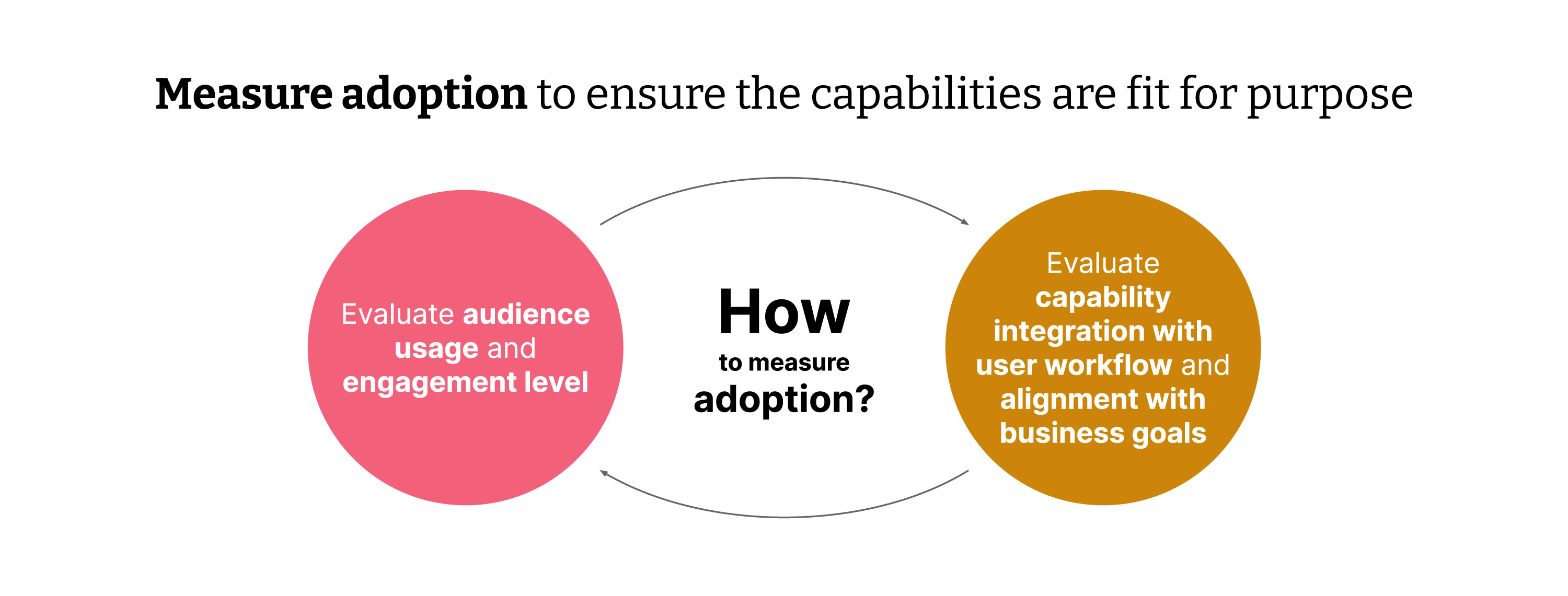TLDR: Internal platforms often get lost in translation between technical teams and the business world. This leads to a disconnect, hindering adoption and, ultimately, platform failure. This post provides a plan to bridge the gap, with three key insights that de-mystify your platform and rally teams for success. It's time to ditch the tech jargon and start talking about the language of value creation, impacting business outcomes, and driving everyone towards a shared vision.


In today's dynamic business landscape, the term "platform" echoes through boardrooms and strategy sessions alike. Yet, amidst this buzz, many organizations struggle to harness its true power, often investing blindly. Drawing from my own journey in platform product management, I've distilled three critical insights ensuring alignment and buy-in across the organization:
Speak the language of value
Go beyond internal users
Prioritize for adoption, not vanity metrics
Let’s take a look at each of these — I’ll unpack how my experience has helped me to arrive at these three key elements.
Speak the language of value
While being part of various platform teams for different clients, I found myself grappling with the elusive purpose of the platform under construction. Engaging in conversations with various individuals revealed something surprising – the meaning of 'platform' was constantly changing, always morphing based on the perspective of the person I was conversing with. This picture probably says it all:


Beyond a mere catchphrase, "platform" embodies diverse meanings, from foundational infrastructure to business model to social hubs. To effectively articulate platform value it’s necessary to clarify:
From an internal perspective what does the word "platform" mean to your organization specifically?
From an external perspective who your users are and what problems your platform solves for them. Understanding their pain points is paramount to crafting impactful solutions.
With so many different types and uses, the term 'platform' can feel overloaded and ambiguous. This makes it critical for organizations to clearly define the specific type of platform they're aiming for. Understanding the platform's context, needs and intended value is vital for clear communication and alignment amongst everyone involved.
Go beyond internal users
In our pursuit of building successful internal platforms, there's a growing emphasis on empathizing with the internal product teams who rely on them. While this is undoubtedly crucial, it's equally important to extend our focus beyond their immediate needs and delve into how these platforms drive value for the business as a whole. While internal stakeholders, notably product teams, are key beneficiaries of a robust platform, its true potential unfolds when we:
Connect the dots: Show how internal user needs translate to end-user benefits and business impact.
Craft a simple narrative: Focus on outcomes, not internal functionalities. This is what gets leadership excited about potential benefits and investment.
Ask yourself: How does our platform streamline operations, enrich user experiences, optimize costs, accelerate time to market, minimize risks, drive innovation, deliver on organizational strategy or fuel organizational growth?
Challenge yourself to think beyond the technicalities. Envision a platform that tells a compelling story of streamlined processes, empowered teams and a future-ready organization. Each feature should resonate with a purpose, contributing to a narrative that goes beyond the 'what' and delves into the 'why.'
So, as you embark on this journey, embrace the 'so what' philosophy: ask yourself why something actually matters. It's not just about features; it's about the profound outcomes that make your platform an indispensable catalyst for organizational success.


Prioritize for adoption, not vanity metrics
Every feature you champion needs to earn its place by demonstrably increasing how users integrate the platform into their workflows. This means adoption should emerge as a pivotal metric, acting as a comprehensive measure of how effectively users incorporate the platform into their day-to-day activities. This isn't just about clicks; it's about measurable contributions to key business goals. By analyzing deeper adoption metrics such as identifying engaged users, improving user onboarding, predicting churn; one can identify hidden value drivers and ensure the platform delivers real impact, not just empty engagement.
More users using your internal platform means:
Strategic alignment: It ensures it is not just a technological tool but a strategic enabler that supports broader business goals.
Enhanced collaboration: Teams share, learn and innovate faster.
Continuous improvement: It will highlight potential barriers to usage, as teams identify areas of improvement. It can also uncover opportunities for expanding impact.


What next?
Driving adoption requires effort; it doesn’t happen on its own. Consider:
Tracking adoption: This will help you to understand which feature teams find particularly useful.
Setting adoption goals: Focus your effort on features with the biggest impact on workflows.
Reviewing regularly: Change your priorities as platform and user needs evolve.
In essence, articulating platform value boils down to a simple, compelling narrative that resonates with everyone involved. I do believe by addressing these three key elements early on, you can bridge the gap between technical brilliance and real-world impact, getting teams excited and driving platform adoption quickly. Ultimately, unlocking the platform's true value, propelling businesses closer to their desired outcomes.
Disclaimer: The statements and opinions expressed in this article are those of the author(s) and do not necessarily reflect the positions of Thoughtworks.


















